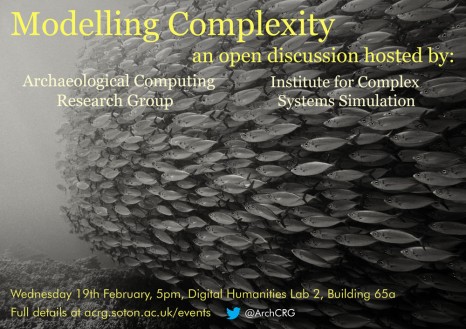Modelling Complexity
Complexity has became a new paradigm in hard sciences in the 90s and since then it has been slowly dripping into the social sciences and humanities. It works on the premise that many systems are complex in structure, i.e. their numerous individual parts interact with each other in a non-linear way producing phenomena which cannot be easily predicted solely on the basis of their characteristics. Think brain: if you were given a few neurons to research it would probably not be your first guess that those little buggers create emotions. Think stock exchange: a behaviour of any one of the stock brokers (buy when you think it’s gonna go up and sell when it’s going down) is not a great predictor of the long term trends or crashes. Now think archaeology: we work on human societies and their complexity is so overwhelming and produced on so many levels that it hardly merits discussing it.
Complexity science’s answer to the challenges of researching systems which, by their own definition, are impossible to understand by looking only at the components is computational modelling – i.e. simulation. Intrinsically almost all research activity could be termed ‘modelling’. In archaeology we create conceptual models (hypotheses, typologies), spatial models (GIS), virtual models (3D reconstructions), statistical models and many more. Note that many of them are static (GIS, 3D, stats) i.e. only look at a slice of the past such as a distribution of a particular type of pottery, age distribution of skellies from a burial ground or the looks of a building’s facade. Simulation allows us to model possible processes that led to the observed patterns. It helps us to create ‘virtual lab’ in which we can test and contrast different hypotheses, find irregularities in the data or find new factors which we would have never guessed to have a significant impact on the system.
We hope to open a discussion of the role and directions of computational modelling in archaeology. We will touch on the potential of complexity science tools but also on the issues and challenges of using simulations and the integration of already well established techniques with the new ones.
Two papers to read:
1. Joshua Epstein. 2008. “Why model?” JASSS 11 (4): 12. – This is a really fun paper and only 3 pages.
2. Premo, L S. 2006. “Agent-Based Models as Behavioral Laboratories for Evolutionary Anthropological Research.” Arizona Anthropologist 17: 91–113.
– This one is not as fun as Epstein but gives a good grounds for theoretical discussion and an example of an actual practical application.

